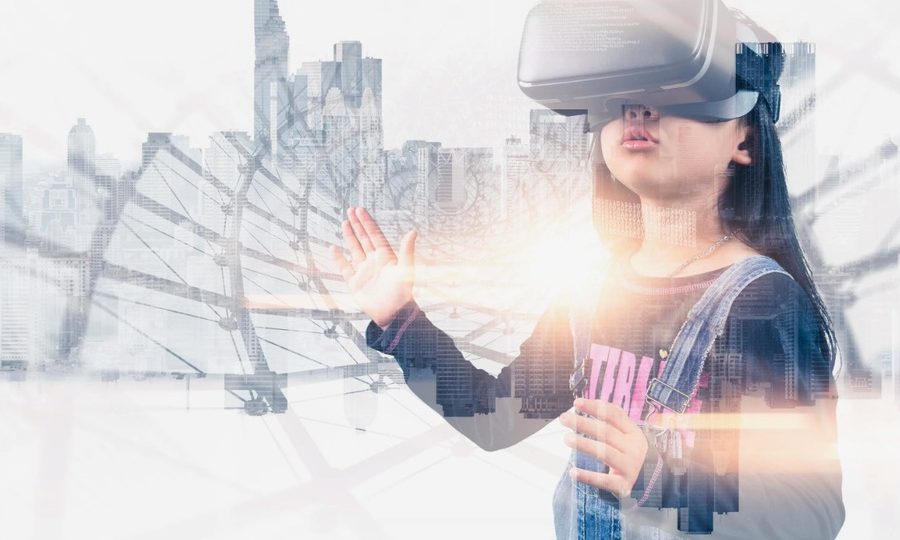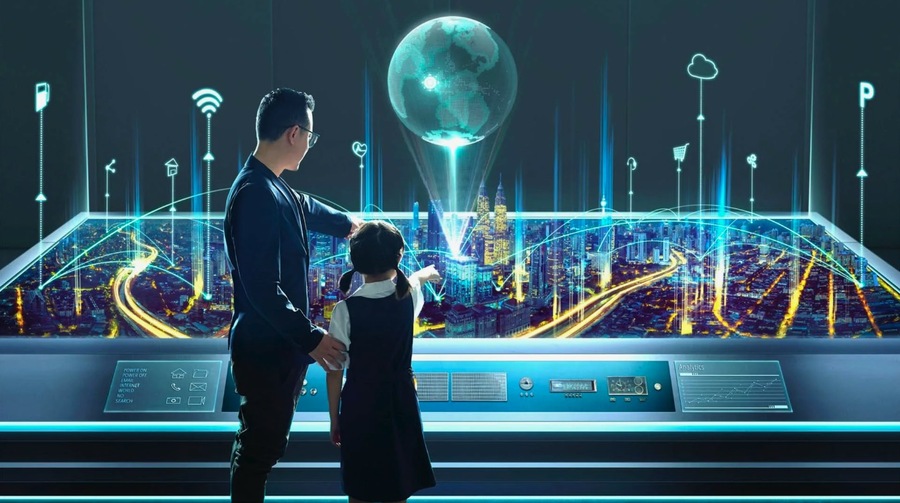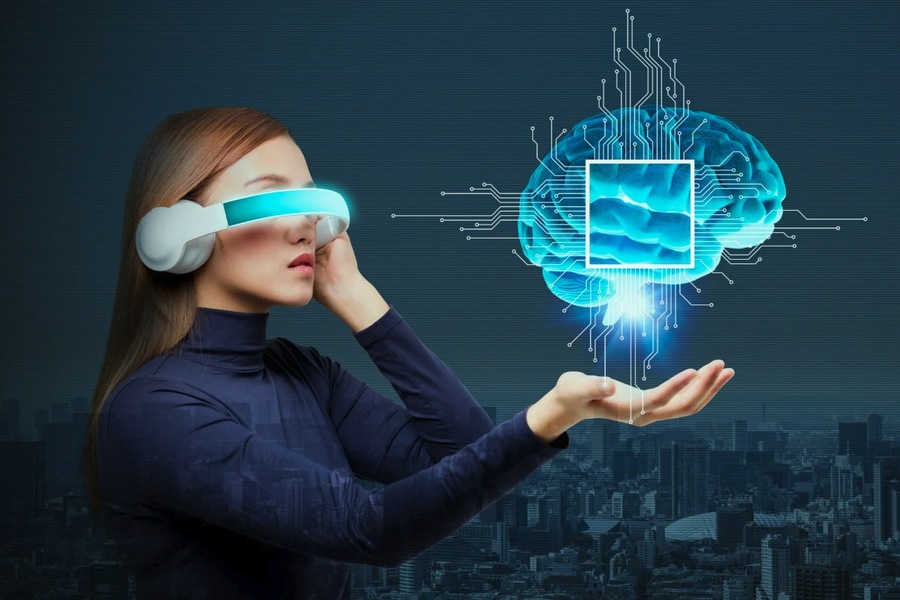
The Future of E-Learning: Trends and Innovations
The educational environment has quickly changed due to e-learning, which gives students unparalleled access to tools and information. Technological advancements are revolutionizing the e-learning landscape, bringing exciting and creative changes to the direction of education. This blog explores the most recent advancements in e-learning technology and their impact on the educational process within English private schools.
From interactive platforms to personalized learning experiences, English private schools are at the forefront of integrating innovative e-learning solutions. These advancements not only enhance the quality of education but also ensure that students are better prepared for the future. As we delve into the latest trends, we’ll see how English private schools are leveraging technology to create a more engaging and effective learning environment.
The Rise of E-Learning: A Brief Overview
Electronic learning, or e-learning, has become a crucial component of contemporary education because it provides adaptable, affordable, and cost-efficient learning options. The rapid growth of e-learning was spurred by the COVID-19 epidemic, which also brought attention to its potential and increased acceptability. E-learning includes various tools and approaches, such as interactive simulations, AI-powered personalized learning, online courses, and virtual classrooms.
Artificial Intelligence and Personalized Learning
The cutting-edge e-learning advances in artificial intelligence (AI) offer customized learning experiences that accommodate different demands and learning preferences. Using student data analysis, AI algorithms create personalized learning routes that increase engagement and yield better results by identifying strengths, limitations, and preferences.
AI-Driven Personalization
AI-driven personalization adapts instructional materials to the specific needs of every learner. Platforms like Knewton and DreamBox use AI to modify classes in real-time so that students are not overwhelmed by too difficult or repetitious information. Personalized learning can potentially increase student performance by 15-20%, according to new McKinsey & Company research.
Intelligent Tutoring Systems
AI is used by Intelligent Tutoring Systems (ITS) to deliver one-on-one tutoring sessions. Some systems, such as Squirrel AI and Carnegie Learning, mimic human instructors by responding to inquiries, giving personalized help, and providing real-time feedback. ITS may greatly improve the educational experience, particularly for those kids who require extra support outside regular school hours.
Virtual and Augmented Reality
Virtual reality (VR) and augmented reality (AR) are completely changing e-learning thanks to their ability to create immersive and dynamic learning environments. These technologies bring abstract ideas to life, increasing learning’s memorability and engagement.
Immersive Learning Environments
Students may thoroughly investigate challenging subjects Through completely immersive virtual reality environments. For instance, engineering students may design and test structures, students studying history can travel to historical civilizations, and students studying medicine can operate virtually. Compared to traditional learning techniques, VR learners are four times more attentive and emotionally linked to the subject, according to PwC research.
Augmented Reality Applications
Augmented Reality (AR) is perfect for courses that benefit from visual and spatial learning since it enriches the actual environment with digital overlays. Students may interactively study electrical circuits, dissect virtual frogs, and explore the solar system with apps like Google Expeditions and AR Circuits. In addition to making studying more interesting, augmented reality makes it easier for pupils to see and understand difficult ideas.
 Gamification and Game-Based Learning
Gamification and Game-Based Learning
Incorporating game design aspects into educational activities, gamification, and game-based learning increase motivation and engagement. These techniques can improve memory and promote active involvement by making learning enjoyable and competitive.
Gamification Elements
Points, badges, leaderboards, and incentives are examples of gamification components that foster a sense of accomplishment and advancement. Gamification is used by platforms such as Classcraft and Kahoot! to enhance the interactivity and fun of learning. According to University of Colorado research, students who learned through gamification scored 14% better on skill-based tests and 11% higher on knowledge-based assessments.
Game-Based Learning
With game-based learning, certain knowledge and abilities are imparted through real games. Complex subjects are fascinating and participatory through educational games like DragonBox Algebra and Minecraft: Education Edition. These games promote teamwork, critical thinking, and problem-solving, which makes learning efficient and entertaining.
Adaptive Learning Technologies
Using data analytics and artificial intelligence (AI), adaptive learning systems continually evaluate student performance and modify teaching strategies. By ensuring that every student receives the ideal amount of challenge and assistance, this method maximizes the learning process.
Real-Time Feedback and Adjustments
ALEKS from McGraw-Hill and Smart Sparrow are examples of adaptive learning platforms that modify real-life lessons based on student achievement. By identifying knowledge gaps and offering focused interventions, this dynamic strategy helps to keep students on course. Up to 25% more students can remain in school when using adaptive learning, according to research from the Bill & Melinda Gates Foundation.
Personalized Assessments
By modifying the level of questions in response to students’ answers, adaptive assessments offer a more precise gauge of comprehension and skill. More focused education is made possible by this individualized approach, which assists teachers in pinpointing the areas in which pupils need to grow.
Collaborative Learning and Social Learning Platforms
Social learning platforms and collaborative learning enable students to communicate and work together, building community and improving the educational process. These platforms facilitate peer-to-peer learning, group projects, and conversations, enhancing the interaction and interest of education.
Virtual Classrooms and Online Communities
With online communities and virtual classrooms like Microsoft Teams and Google Classroom, students may share materials, collaborate in real time, and participate in conversations. These platforms help students comprehend and remember the subject better by facilitating peer learning and encouraging active learning.
Social Learning Networks
Social learning networks—such as Edmodo and Schoology—provide a forum for interaction, idea sharing, and feedback between students and teachers. These networks help students stay engaged and connected by promoting ongoing participation and informal learning.
Microlearning and Modular Learning
Microlearning and modular learning make learning more flexible and accessible by breaking difficult subjects into smaller, more manageable chunks. This strategy caters to modern learners, who frequently prefer bite-sized material to read at their leisure.
Bite-Sized Learning Modules
Microlearning modules offer brief and focused education, concentrating on particular subjects or abilities. Learning may be done quickly and conveniently with the help of apps like LinkedIn Learning and Duolingo, which offer brief sessions that can be finished in minutes. According to research published in the Journal of Applied Psychology, microlearning increases memory retention by 17%.
Modular Course Design
Thanks to modular course design, students may tailor their learning paths by selecting modules corresponding to their objectives and areas of interest. This adaptable method encourages lifelong learning and aids in students’ skill development. Modular course designs are becoming increasingly popular among universities and online learning platforms like edX and Coursera to accommodate a varied student body.
 Learning Analytics and Data-Driven Insights
Learning Analytics and Data-Driven Insights
Data-driven insights and learning analytics offer insightful information about how well students perform academically and how they learn. By analyzing this data, educators may enhance learning outcomes, customize training, and make well-informed judgments.
Tracking Progress and Identifying Trends
Learning analytics tools like Tableau and Power BI monitor student development and spot performance patterns. Teachers may use this data to better understand how their pupils learn and pinpoint areas where they might need more assistance. A study by the Educause Learning Initiative claims that student retention rates increase by 21% in institutions that employ learning analytics.
Personalized Learning Insights
Each student receives customized suggestions from data-driven insights, assisting them in reaching their learning objectives. These revelations can point out gaps in knowledge, recommend new sources, and provide ways to improve. By utilizing data, teachers may design more individualized and efficient learning experiences.
Mobile Learning and Accessibility
Mobile learning, often known as m-learning, uses tablets and smartphones to increase accessibility and convenience in education. With this method, students may access instructional materials on the go and study at any time, anywhere.
Mobile Learning Apps
Mobile learning applications such as Khan Academy and Quizlet offer an extensive library of instructional materials, including interactive courses, videos, and quizzes. These applications allow students to engage in self-paced learning and study anytime and anywhere easily. According to research by Ambient Insight, the demand for mobile education is expected to expand, with the global market for mobile learning expected to reach $37.6 billion by 2025.
Enhancing Accessibility
Mobile learning improves accessibility by providing educational opportunities to pupils in underprivileged or rural places. No matter where they are, students may access top-notch instructional materials using smartphones and tablets. This strategy lessens the digital gap and gives all students access to the tools they require for success.
Conclusion
With continuous breakthroughs and trends reshaping the educational environment in previously unheard-of ways, e-learning has a bright future. These technologies are revolutionizing education, from immersive VR and AR experiences to AI-driven personalized learning. With its ongoing development, e-learning promises to provide students of all ages with more adaptable, interesting, and productive learning opportunities.
Educators and institutions must adopt these developments to keep ahead of the curve in this quickly evolving world. By utilizing the newest e-learning technology, they may design dynamic, customized learning experiences that meet the various demands of contemporary learners. With the help of technology, education is entering a new phase that promises to be accessible, interesting, and customized to meet the individual requirements of every student.

Hiking addict, maker, hiphop head, Swiss design-head and AIGA member. Producing at the fulcrum of design and computer science to create strong, lasting and remarkable design. Concept is the foundation of everything else.